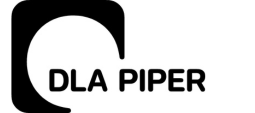On 1 October 2024, the most important provisions of the new Hungarian Architecture Act will enter into force, completely transforming the current system of rules governing construction activity in Hungary.
The main provisions entering into force will ensure for example that municipalities will be required to incorporate the local building regulations and the town design guidelines into a single piece of legislation. For municipalities with less than 5000 inhabitants, the local building regulations will contain significantly fewer mandatory elements than before. Uniform national regulations (e.g. parking regulations, placement of advertising) will be adopted in multiple areas and the regulatory options for local building regulations will be reduced. The time for the adoption of the local building regulations will be reduced by using digital coordination for settlement plans. A new national and local planning system will be established, as well as a new system of planning councils, chief architects and landscape architects. The rules on the designation of land for construction will be tightened to preserve and increase green areas and the green area certificate will be introduced.
In addition, a new government decree on municipal green infrastructure and green spaces will enter into force, and the Government Decree on the Basic Regulation on Municipal Planning and Building Requirements will replace the National Town Planning and Building Requirements. The framework rules for the protection of the townscape will also be contained in the Hungarian Architecture Act. Detailed rules on the placement of advertising media will only be able to be laid down in national regulations.
An important change that the legal institution of “simple notification” as it is known today will be abolished. From 1 October 2024, the Hungarian Architecture Act provides two types of procedures to clarify the conditions for the construction of a building: a procedure for the granting of a building permit and a procedure for the acknowledgment of a simple notification. The separate building control authority will cease to exist; the tasks will be carried out by the building authority of the Metropolitan and County Government Office.
The rules for the occupancy permit procedure will also be significantly changed, with additional rights for both builders and designers. For example, in the case of offices and warehouses, it will be possible to issue the occupancy permit of the building with a certain degree of completion, so that the interior can be designed by the future user or tenant. In some cases, the architect’s declaration will be compulsory for the occupancy permit. The legislator will also introduce a special system of redress for this new requirement. Government Decree 191/2009 (IX.15.) known as the “Construction Code” will be modified, as Chapter VII of the Hungarian Architecture Act will contain the participants in the construction process and their responsibilities. Among other things, the distribution of responsibility related to the plans will also change. Provisions on the copyrights of designers are also included in the Hungarian Architecture Act.
The Hungarian Architecture Act intends to define the architectural direction for the future by respecting the Hungarian architectural heritage and architectural identity, with a strong emphasis on the pursuit of greater aesthetic quality. While affecting every participant in the field, it is a welcome unification of the rules about architecture and construction.
By Denes Glavatity, Associate, KCG Partners Law Firm




